Key Points
Prioritized community access as a common goal among decision makers and provided the tools to monitor and evaluate programs.
Invested in human resources and health systems infrastructure to ensure an adequate supply of materials and to increase access, reliability, and convenience for community members.
Systemized a bottom-up approach to evidence-based decision making. Fostered subnational responsibility in program planning, reporting, management, and evaluation, and built capacity for using data among workers at both national and subnational levels.
Ensured that vertical funding mechanisms focused on specific issues also contributed to the strength of the overall immunization system.
Zambia’s actions to improve immunization coverage were consistent with international guidelines such as the Global Routine Immunization Strategies and Practices (GRISP) and the Reaching Every District (RED) strategy for strengthening immunization systems and increasing coverage rates., As a result, Zambia’s actions can serve as a case study for successful implementation.
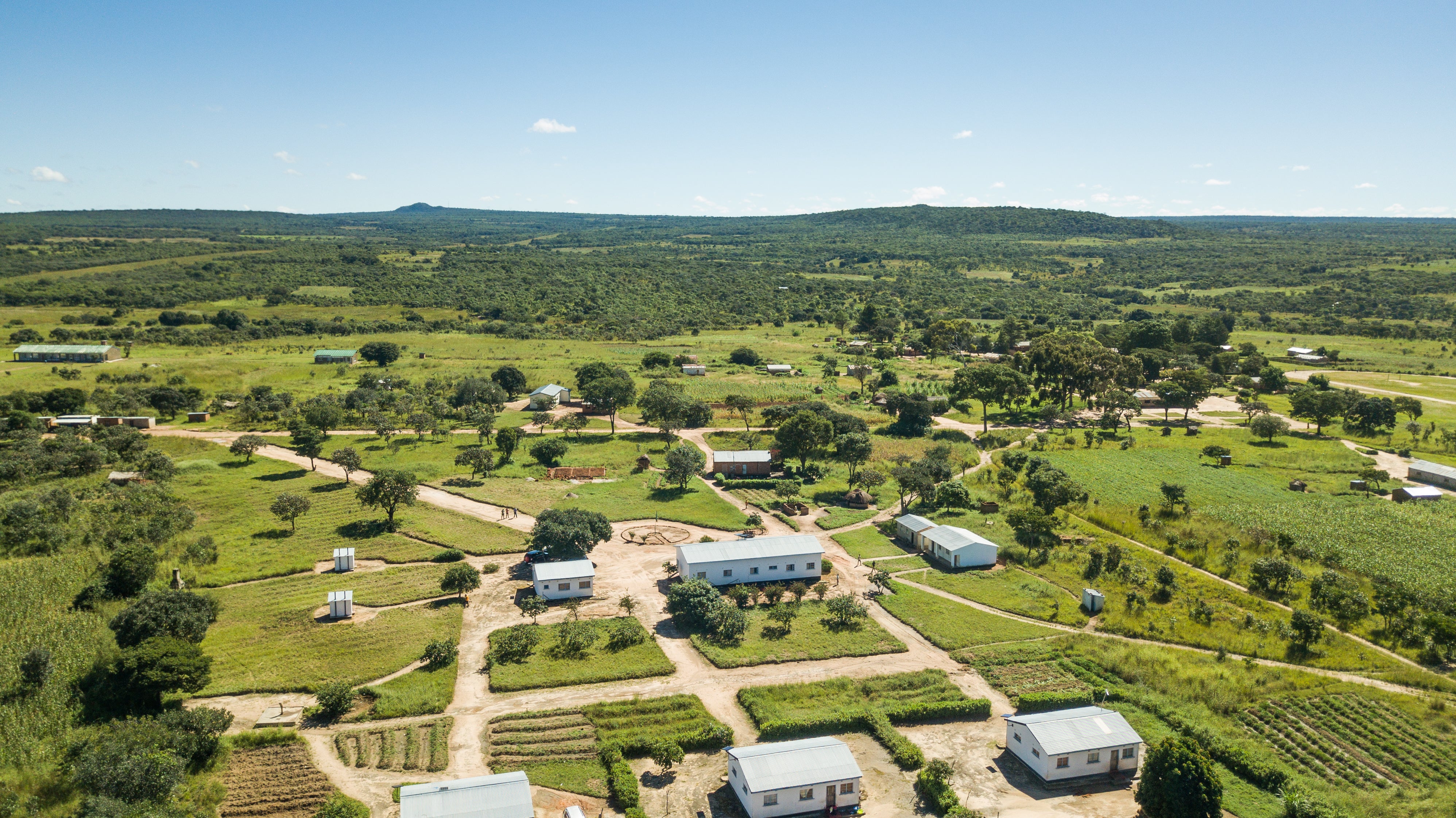
Prioritized community access as a common goal
Zambia set concrete targets in national strategies and worked with relevant actors to emphasize the importance of community access to health care and immunization.
Established a target for community access
In 2006, Zambia—with input from community leaders, civil society organizations, government departments, cooperating partners, and citizens—developed Zambia Vision 2030 to advance long-term development policies to meet the country’s socioeconomic goals, including “equitable access to quality health care by all by 2030.” As part of this focus on equity, it prioritized community access, setting a target to increase the population of rural households living within 5 kilometers of the nearest health facility from 50% to 80% by 2030.
From 2011, the late President Michael Sata (2011–2014) and President Edgar Lungu (2015–2021) created new districts to foster rural development, ease administrative oversight and equitable distribution of resources, and improve access to services.,, Additionally, new health facilities were established and existing facilities were restored and updated. This increased the proportion of rural households living within 5 kilometers of the nearest health facility to 78.6% in 2016, approaching the 2030 target.
Restructuring of provinces and districts brought both challenges and opportunity. Newly created districts needed health offices and other resources, which took time to implement. On the other hand, areas with historically lower coverage received increased allocation of resources and interventions; for example, policies deliberately increased support for Luapula, previously the poorest province, beginning in 2012. In the last decade, Luapula has been included in most pilot programs aimed at improving health care.
Partially due to Zambia Vision 2030 (described in more detail in the Context section), the number of health facilities increased substantially from 1,214 facilities in 2000 to 2,818 facilities in 2017, effectively decreasing community travel time (walking) to a closest facility with routine immunization (RI) services. The proportion of children under one living within a 30-minute walk of a health facility increased from an estimated 21% to 34% between 2000 and 2017 (see Figure 10).
Figure 10: Changes in access, 2000 and 2017

IHME. Geospatial childhood vaccine estimates, 2022
Within the same period, Western and Northern regions saw notable increases in the number of facilities with RI services, with the majority of the population being able to access a facility in under one hour (see Figure 10 and Figure 11). It is important to note that, for most children, reasonable travel time, as shown in Figure 12, remains dependent on access to motor vehicles; this is mitigated by outreach services and child health weeks.
Figure 11: Median travel time to a facility with RIservices in 2000 and 2018

IHME. Geospatial childhood vaccine estimates, 2022
Figure 12: Community access: Travel time (walking) to closest facility with RI

IHME. Geospatial childhood vaccine estimates, 2022
Additional analyses demonstrated a positive association between reduced travel time and likelihood of vaccine coverage; however, this relationship was nonlinear. The likelihood of being vaccinated with all three doses of diphtheria, tetanus, and pertussis vaccine increased exponentially as the travel time to facilities with RI services decreased to less than four hours, as shown in Figure 13. Efforts to improve access to RI services may therefore result in the largest gains when targeted to populations already within a few hours of existing facilities.
Figure 13: Estimated likelihood of DTP3 coverage

IHME. Geospatial childhood vaccine estimates, 2022
Investing in Human Resources and Health Systems Infrastructure
Expanded trained health workforce, especially in communities
Zambia also prioritized facility readiness by dramatically increasing the number of health workers. In the early 2000s, Zambia had less than half of the health workers needed to cover the catchment population, especially in rural areas, due to inefficient management, centralized decision making, inadequate training, and poor working conditions and wages. Zambia implemented GRISP recommendations by investing in capacity strengthening, motivation, and professional development of health workers who administer vaccines. The Zambian government called for increased investments in health worker recruitment, retention, and training. In 2017, the government pledged to recruit 30,000 new health workers by 2021; by 2019, 21,000 had been hired.
Health facility personnel who contribute directly to vaccination coverage include nurses in charge, environmental health technicians, and community health assistants (CHAs).
Nurses in charge manage health centers and health posts, supported by CHAs and community-based volunteers (CBVs). CHAs and CBVs provide community-level services and most of the health workforce is employed and salaried through the Ministry of Health (MOH).
Environmental health technicians are widespread in Zambian health facilities and perform several services, including conducting environmental inspections, disease surveillance, and outbreak investigations, as well as monitoring services and data provided at the community level.
Each health post is typically overseen by a nurse in charge. Although Zambia has made important progress in training, recruiting, and retaining nurses (see Table 1), 34% of nurse posts at health posts were still vacant as of 2019.
Table 1. Levels of Nursing Staff in Zambia 2005–2016,
| 2005 | 2009 | 2011 | 2016 | |
|---|---|---|---|---|
Target | 16,732 | 16,732 | 17,497 | 18,484 |
Actual | 6,096 | 7,123 | 7,996 | 11,666 |
Gap (%) | 10,636(64%) | 9,609(57%) | 9,501(54.3%) | 6,818 (37%). |
New positions in the districts and health facilities were created to distribute the heavy workload and improve overall coordination and delivery of services. CHAs were introduced in 2010 to address the extreme shortage of human resources in public health. These health workers focus on “the community as their client”; they are responsible for supervising health promotion and outreach in the communities and developing a strong link with civic, community, and religious leaders. In 2010, the MOH set a target of training 5,000 CHAs by 2021. By 2016, 2,502 CHAs had been trained, but only 67% of them were working as CHAs, due in part to lack of funding for salaries.
High-performing CHAs with at least three years of experience have the opportunity to be promoted into nursing, clinical, and environmental health programs. CHAs are expected to spend 20% of their time in the health facility and 80% in the communities. Due to staff shortages, 23% of all CHAs are acting as facility in-charges and are not being overseen by a nurse.
Integrated community-based volunteers into health service delivery
The government acknowledged the value of volunteer health workers; for example, in the National Community Health Worker Strategy in 2010, it standardized and clarified the duties and obligations of CBVs. CBVs in Zambia bridge the gap between the formal health system and communities and are a fundamental component of community health. Their roles are integrated into the delivery of primary health care services. Rural and urban communities alike look to CBVs to assist on a wide variety of health topics, including HIV counseling, gender-based violence prevention, nutrition, and literacy.
Both CBVs and CHAs are selected by their respective communities; however, just two CHAs (who are on government payroll) are allotted per community, whereas CBVs are more numerous. Two CBV cadres that play a role in community immunization are the Safe Motherhood Action Groups and the Growth Monitoring Promoters (sometimes called Child Health Promoters).
Safe motherhood action groups educate pregnant women on maternal vaccinations and begin educating on infant immunization approximately one month before birth, but this could vary by community. They also remind new mothers to seek the postnatal bacille Calmette-Guérin vaccine before leaving the labor ward. Growth monitoring promoters focus on nutrition for children under age two and the vaccines children are scheduled to receive by that age.
Another cadre of CBVs, the neighborhood health committees (NHCs), was introduced by the Zambian government in the late 1990s to serve as a link between health facilities and communities. NHCs consist of community-appointed volunteers whose primary role is to coordinate and supervise other CBVs on behalf of the health facility staff and ensure CBVs complete and submit routine reports related to their monthly activities. They also represent CBVs and community members in annual action planning.
While NHCs exist in 84% of communities, with more engagement in rural than peri-urban areas, their range of activities varies. In most of our research communities, NHCs played a large role in community sensitization and education and contributed to health facility action plans. Because NHCs are recruited by community leaders and work closely with leaders and health facility staff, they are a trusted source of information for community members.
NHCs are a crucial link in a feedback loop that has been established between communities and the formal health system. Zambia created a communication channel from the community members to the subnational health offices to report challenges and identify solutions. Community members report through NHCs or community leaders, who direct information to health facilities or district health offices. As seen elsewhere in Zambia, this bottom-up approach to problem-solving promotes local ownership of decision making.
In 2017, Zambia had about 23,000 CBVs, which is 68% of the projected need of 1 CBV per 500 people. Due to inconsistent management of CBVs, low or nonexistent remuneration, and inadequate supplies, turnover is high. CBVs face inconsistencies in incentives and tend to migrate between roles depending on where they receive the best compensation, which may cause an imbalance in the distribution of CBVs.
The Community Health Department under the Department of Public Health in Zambia is working to provide standardized and uniform incentives to CBVs. The most recent National Community Health Strategy identified disharmonized incentives as a challenge and allocated the district health office to coordinate and oversee CBV incentives (e.g., lunch and transport reimbursement), supplies (e.g., protective clothing), orientation and training, and involvement in national campaigns. Context-specific strategies to retain CBVs may include improving coordination of activities between health facility catchment areas, considering CBV work schedules in planning, and providing timely feedback on performance.
Improved training for health workers and volunteers
Due to the severe shortage of health human resources in Zambia, the country developed a National Human Resources for Health Strategic Plan in 2018. A primary component of this strategic plan was ensuring adequate training for health workers. Zambia also developed its national training operations plans to improve training, supervision, and coordination of health worker responsibilities, and to identify appropriate performance indicators for the workforce at the health facility, district, and provincial levels.
Specific improvements resulting from these plans included the scale-up of health worker training programs, including both preservice and in-service training. The frequency of district supervisory visits to health facilities increased from quarterly to monthly, which reduced health worker absenteeism and improved peer-to-peer learning. The plans also increased opportunities to identify high-performing facilities and share solutions for common challenges. Service quality assessments were integrated into district-level responsibilities, both to evaluate health facility performance and to strengthen supervisory activities. The MOH assumes responsibility for health worker in-service training but may rely on partner funding from the United Nations Children’s Fund (UNICEF); the Global Fund to Fight AIDS, Tuberculosis and Malaria; PATH; and others. Funding to support introductions of new vaccines enables government-sponsored refresher trainings on vaccine delivery for health workers. Vaccine promotion and education also increase during these introductions, which in turn increases popular acceptance of the vaccines.
“Whenever we have a new vaccine, we do orientations, we involve the staff, and we involve the community. So the staff will also in turn go and orient at their level. So we do quite a lot of sensitization before we do the actual immunizations. And we talk more on the benefits and allow the community to ask questions concerning the new vaccinations so that they can accept [them].”
District Health Director
Challenges in training remain, however. Preservice training on the Expanded Programme on Immunization has been integrated into curricula for nurses but not for other health workers. Although district health information officers are mandated to provide training on data collection for health facility nurses in charge, environmental health technicians, maternal and child health coordinators, and CHAs, they do not do so routinely.
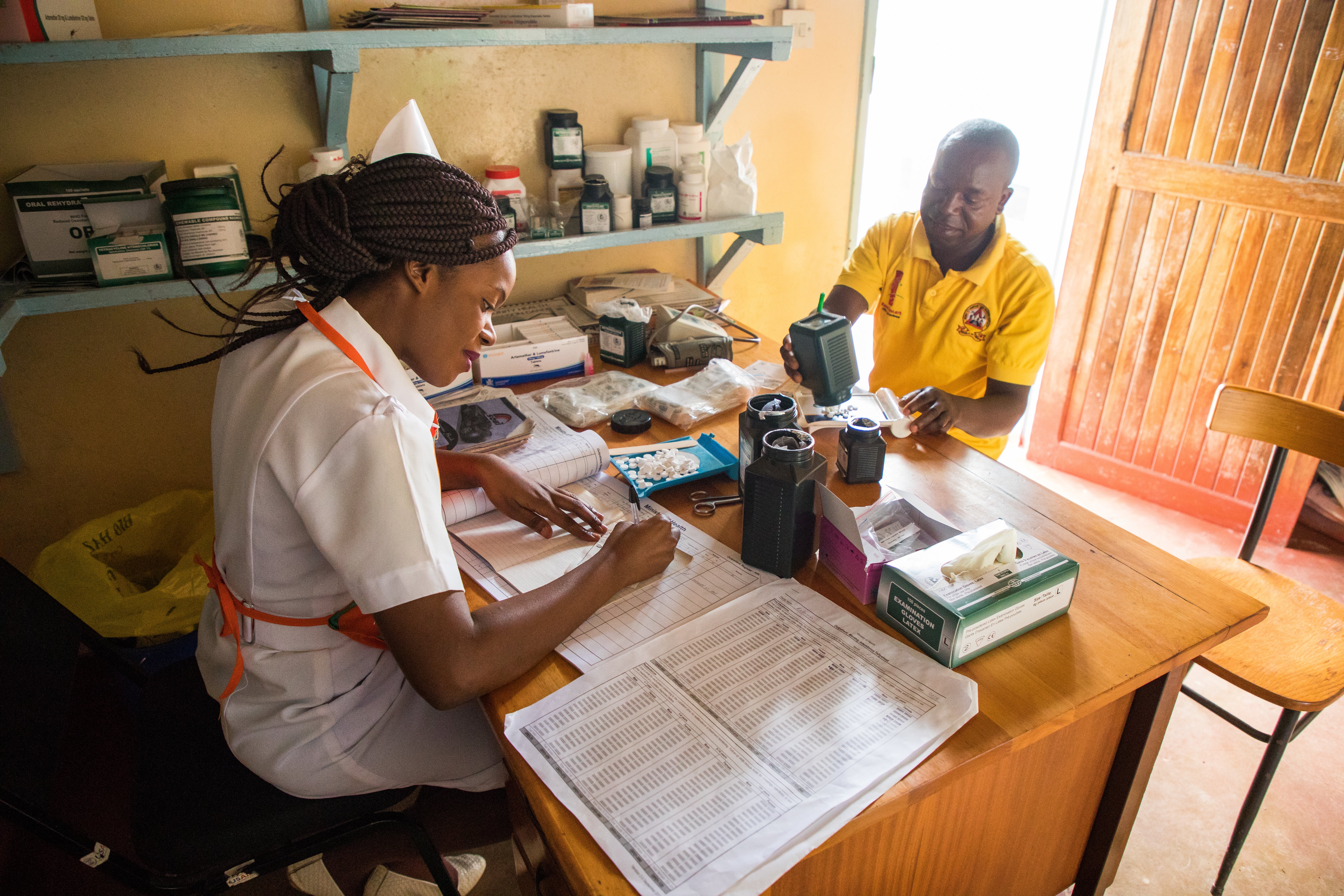
Prioritized facility readiness
The cold chain and reliable supplies of vaccines are essential to facility readiness. In 1997, an assessment of Zambia’s vaccine cold chain transit and storage system found that 11% of refrigerators and freezers in the district health facilities were broken and 30% of all equipment was more than 10 years old. Essential equipment for vaccinations was also inappropriately distributed, with some districts experiencing a shortage and other districts having a surplus.
To preserve the effectiveness of its current vaccines and prepare for Gavi-supported introductions of additional vaccines, the MOH initiated a cold chain expansion in two phases. The first phase began in 2002 with the procurement of electric and solar refrigerators in all districts; solar-powered refrigerators have become the gold standard for areas without electricity. The second phase began in 2012 with installation of cold rooms in all 10 provinces., The MOH and its partners supplied districts with either electric refrigerators or cold rooms.
The cold chain expansion in Zambia has played a significant role in improving immunization. Key informants, both internal and external to the MOH, identified cold chain expansion as a vital step in improving vaccine coverage.
A readiness assessment of 144 facilities showed that one-quarter of all these had particularly strong capacity for services based on their staffing and guidelines, non–cold chain equipment and supplies, as well as cold chain equipment. Typically, facilities in the lowest quartile of readiness had limited cold chain capacity. The analysis also suggested low regular service availability across all sampled facilities, highlighting the key role of outreach sessions and child health weeks. See Figure 14.
Figure 14: Quartiles of facility readiness index | WHO SARA-BASED Index of vaccine service delivery

Liu PY, Fullman N, Gueye D, et al. Quantifying drivers of childhood vaccination in Zambia: a modeling analysis based on the Exemplars in Vaccine Delivery Framework. 2024
While improvements to the cold chain were needed to introduce the second dose of measles-containing vaccine and pneumococcal conjugate vaccine, the MOH took additional steps to ensure that investments in the cold chain were sustainable. They included a budget line for the cold chain to ensure the infrastructure was maintained. In addition, the MOH assigned an EPI subcommittee to oversee cold chain operations at subnational levels, reporting to the national Inter-Agency Coordinating Committee (ICC) and other coordination forums as needed.
“We have cold chain, we have service delivery, we have monitoring and evaluation . . . all these are part of the ICC. I have been given time to present the case in terms of the vaccination or how the cold chain has been operating at different levels, and also if there are any challenges . . . and if there is any support which we need as a program.”
A Cold Chain Official
In a 2018 appraisal, Gavi documented plans to deploy cold chain officers in each province and district to provide closer oversight of cold chain operations. Previously, only two cold chain officers served the entire country. At the time of the most recent data collection, provincial officers had been deployed but district officers were not yet in place.
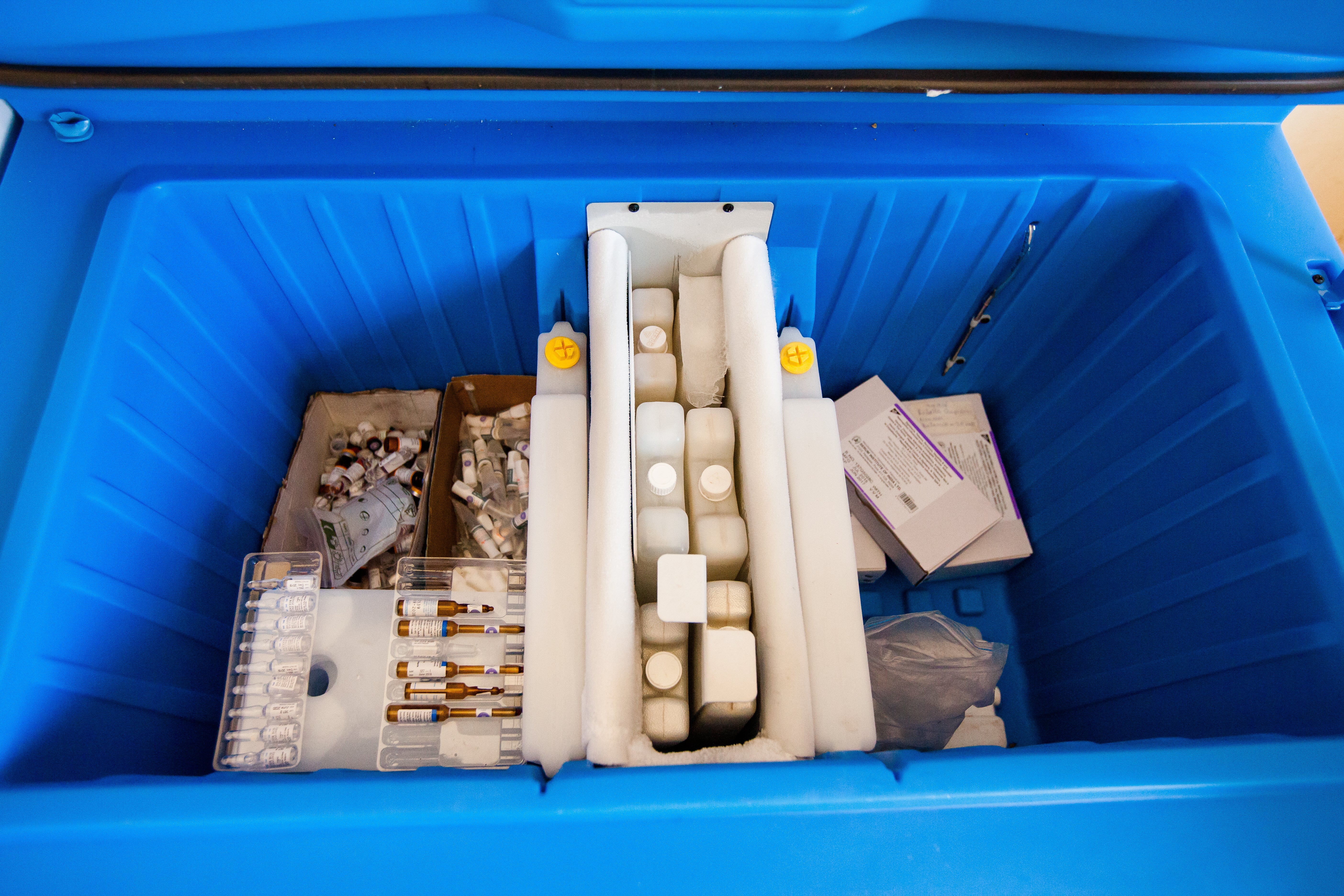
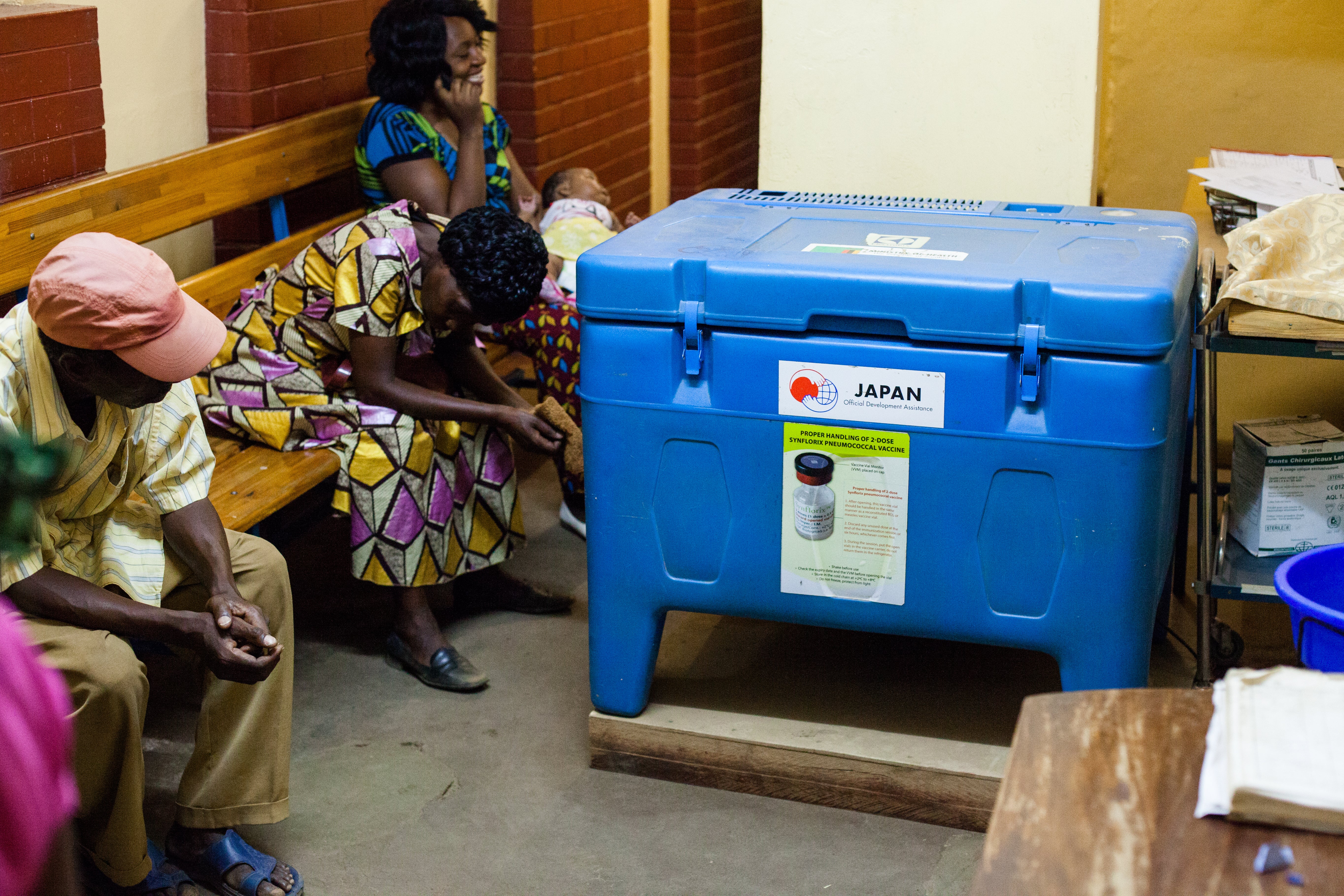
Systemized a bottom-up approach to evidence-based decision making
The Zambian MOH considers monitoring and evaluation (M&E) to be critical for decision making at national and subnational levels. This is echoed by the RED guidelines, which consider M&E an essential component of effective management. M&E reports inform Zambia’s National Health Strategic Plan, which is revisited every four years, and health funding priorities. The reports also hold health officers accountable for program performance.
Implemented tools to improve data quality and enable monitoring
Zambia’s MOH prioritized and invested in district-level services, providing more oversight functions on data collection, auditing, analysis, and collection tool upgrades. M&E of health indicators started in the late 1990s following decentralization and a series of health system reforms that made the MOH more open to introducing new tools and technology systemwide.
One of the tools was the Health Management Information System (HMIS). In addition to supporting M&E, an HMIS is essential for management and planning, situation and trend analysis, and global reporting.
Zambia’s HMIS is an open-source software package, used by 73 low- and middle-income countries, that supports the capture, analysis, and dissemination of health information. These data on infectious diseases, immunization, and service delivery enable better delivery of health services and inform improvements in community access. The HMIS allows users to quickly access relevant M&E tools, including indicator charts and links to selected reports and maps. Data entered at the district level are immediately accessible to officials throughout the MOH system.
Each district’s health information officer is responsible for entering data into the HMIS every month. Previously, data were reported quarterly. Shifting to monthly reporting has enabled quicker data review, analysis, and time-sensitive feedback. More specifically, monthly reporting allows for up-do-date audits and M&E activities, thereby improving vaccine coverage through identification of low-performing areas.
Institutionalizing data usage has improved reporting timeliness, consistency, completeness, and the overall quality of immunization data in Zambia, but continued improvement is still needed. Reporting rates are generally high, but not all districts report fully. In 2017, just over half of the facilities had achieved complete reporting. Additional challenges included lack of timely submission of data and inconsistencies in monthly reporting.
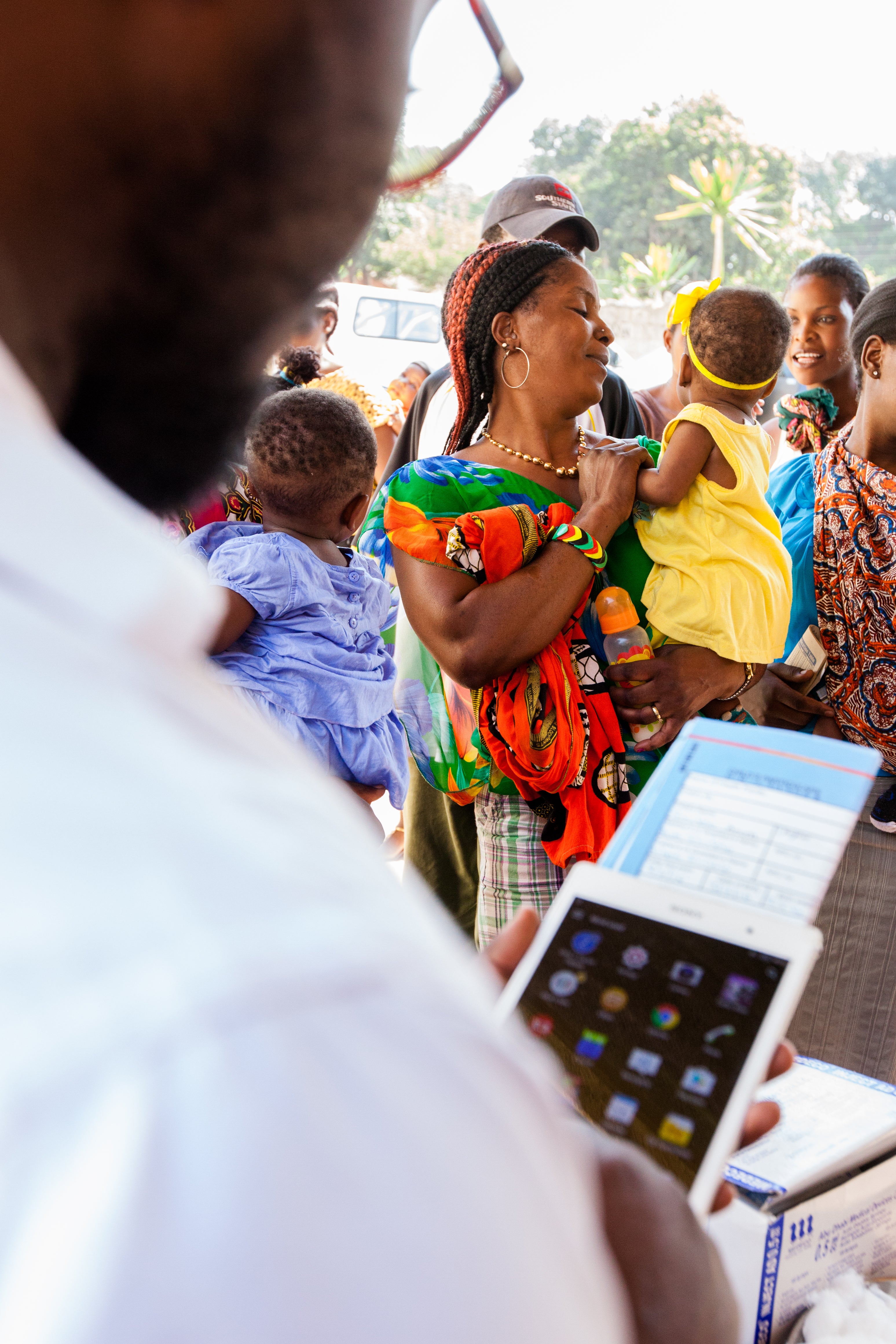
National monitoring and evaluation unit provided staff training to ensure data quality
To improve and sustain data management, the M&E department within the national MOH provided regular training and workshops to health facility staff on health information systems and tools used in data management.,
Since the creation of the M&E department in 1995, it has strengthened the capacity of hundreds of staff members who are appointed at subnational levels as health information officers. All provinces have a health information officer who is a core member of the provincial health management team. The district health information officers are also core members of the district management teams. At the health facility level, at least one person is trained in data management.
With support from partners such as the World Health Organization (WHO), senior managers at MOH headquarters conduct train-the-trainer sessions in data collection and reporting for provincial health information officers. The provincial health information officers then train district health information officers, who train nurses in charge and community health workers.
Results-based financing improved data quality
In 2008, Zambia launched a results-based financing pilot program with support from the World Bank. This program aimed to strengthen the health system and improve health service delivery, including immunization services. The pilot program provided support to improve data quality, with some incentives applied to data collection, analysis, reporting, and use within the health system. The program was initially launched in 11 districts in 9 of the country’s 10 provinces; after expanding to more districts in 2012 and 2015, the program concluded in 2019.
Activities supported by the results-based financing pilot program included provision of incentive payments to both district-level management and health facilities based on individual and institutional performance. The program also increased both the availability and quality of data generated by the HMIS to inform evidence-based decision making. A 2014 program evaluation showed that the accuracy of routinely reported HMIS data had improved and misreported data had declined significantly.
Ensured ownership of data-driven decisions among frontline health workers
Frontline health workers have gained ownership of local decision making through standardized, regular review of data to monitor immunization indicators, identify gaps in coverage, and develop plans to address or mitigate challenges. That ownership manifests itself in a variety of ways at all levels of the system.
Frontline workers assess their performance and identify strategies to reach targets. Health facility workers use the data to determine the immunization rate during static and outreach immunization sessions. CBVs conduct head counts and use tally sheets to identify which children are missing vaccines. Health care workers can use the data to identify areas with lower immunization coverage to establish additional outreach sites as well as discuss reasons for dropouts and ways to mitigate them. The environmental health technician in each health facility aggregates the data into the overall monthly report that is sent to the district health office each month.
Relatedly, data-driven approaches have contributed to the country’s goal of increasing retention over time. Zambia implemented its 2006–2010 National Health Strategic Plan, which established a target to increase the percentage of fully immunized children from 43% in 2004 to 90% by 2010; the country was able to achieve this in 2009. Successive strategic plans have continued to prioritize this performance indicator, with the most recent plan setting this target to 95% by 2026.,
Health facility staff review data from monthly activities with CBVs and CHAs and discuss which targets were met or missed, and ways to improve the vaccination coverage. Health facility staff also review data quarterly to evaluate performance against the community action plan.
“Our aim is to make sure that those community people can understand our indicators in a simpler language. So that when they sit down, they review their own data, and they are able to identify their own problems. And if there is a local solution just within, they can tackle it.”
A District Health Director
What makes the M&E process stand out in Zambia is the ownership of data management by frontline workers and the level of community participation.
Formalized and standardized regular data review and audits
Stakeholder meetings are conducted at all levels of the health system to review data and address gaps in coverage (see Table 2). Management teams at the district, province, and national levels hold such meetings regularly to review and discuss indicators and quickly take action when there is a gap in vaccination coverage.
Table 2. Levels and Frequencies of Integrated Stakeholder Data Review Meetings
| Levels of the meeting | Frequency | Meeting organizer | Participants |
|---|---|---|---|
National | Weekly | MOH* | MOH, senior officers |
Monthly | MOH | MOH, senior officers, PHDs | |
Provincial | Quarterly | PHD* via Provincial Integrated Meetings | Provincial health management team, districts teams, local partners |
District | Monthly | DHD* via District Integrated meetings | District management team, health facilities teams, community members |
Health facility | Monthly | Nurses in charge | Nurse in charge, other health facility staff, CHAs, HCC, community leaders |
Abbreviations: CHA, community health assistant; DHD, district health director; HCC, health center committee; MOH, minister of health; PHD, provincial health director.
Additionally, data are regularly audited at all reporting levels to ensure quality. Internal audits are conducted by district health information officers at health facilities where they check immunization registers and other documents for accuracy and quality.
"We have been advising facilities that they need to own the data, they have to make sure that they utilize it by analyzing. They look at their targets, whether they are meeting their targets or not. If they are not meeting their targets, they need to assess themselves and see where they are going wrong. And also at the district level, we review this data and see which facilities are performing well and those that are not performing well. For those that are performing well, we find out what they are doing and we try to replicate to the other facilities that are not doing well."
A District Health Information Officer
There are also audits at the provincial and national levels. Districts are audited each month, and provinces are audited every three months. Every five years, the entire MOH undergoes an external data audit. This cascade of audits has fostered accountability in reporting health data among health workers at all levels. They understand the expectation to achieve certain coverage levels and that this expectation is grounded in the data audit reports.
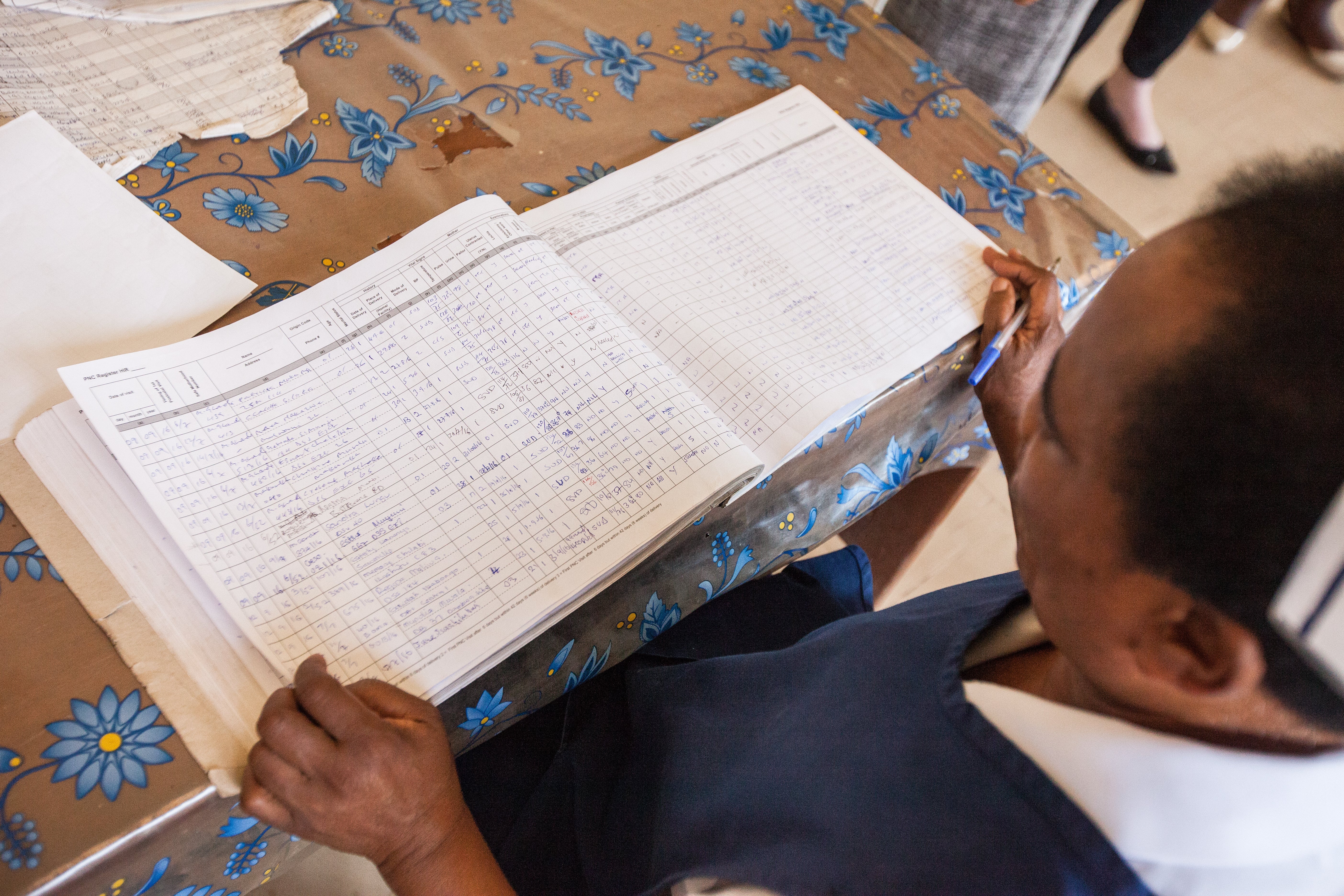
Used community-collected data to address inaccurate and outdated census data
Although Zambian health authorities have made significant efforts to improve data quality over the years, the country still struggles to correctly project its population size. The MOH relies on the Zambia Statistics Agency, which conducts a general population census every 10 years.
The census estimation becomes quickly outdated, however, which leads to inaccuracies at the district and health facility levels. When the census is inaccurate, the estimation also becomes inaccurate. To remedy this issue, some districts and health facilities implemented RED recommendations to use head counts conducted by CBVs to determine target populations. CBVs conduct head counts of all children ages 0 to 11 months and 1 to 5 years. Based on these counts, they develop a community map showing the physical or social barriers to vaccination, resource facilitators, and distances between outreach posts and health facilities.
“We have a census every ten years and as you move away from . . . the time of the census then you just depend on projections, and we’ve realized that sometimes these projections actually give numbers that you can’t actually depend on. So we have to improvise, start working with our community so that we can come up with the actual head counts just to have an idea of the number of children that you are dealing with.”
MOH official
An external evaluation conducted by Gavi in 2018 noted this recurrent issue with inaccurate estimates and recommended that Zambia proceed with expanding the electronic immunization registry, which has the potential to improve overall immunization quality.
Ensured that vertical funding contributes to overall system
Development funding is often siloed or earmarked for specific activities, rather than used to support multisectoral disease-prevention strategies. For example, a large amount of infectious disease funding has been provided to countries specifically for polio and measles initiatives. At the 41st World Health Assembly in 1988, polio was targeted for global eradication by the year 2000. In 2012, measles was targeted for elimination by the year 2020 in five WHO regions. These targets were not met, and the Global Polio Eradication Initiative and the Measles & Rubella Partnership continue to support eradication and elimination efforts.,
Zambia has demonstrated that targeted disease control funding can also supplement RI activities such as training and surveillance.,,,
Included routine immunization messaging to improve uptake
Zambia created synergies among RI, accelerated disease control efforts, and new vaccine introduction. In particular, Zambia leveraged targeted, disease-specific funding to build out related improvements in RI, as part of a multisectoral or “horizontal” approach to immunization and primary health care. According to GRISP, these strategies serve to maximize the reach of the immunization system.
The Zambian MOH has used this funding to strengthen RI messaging, conduct refresher trainings, and implement additional CBV activities. An informant at the provincial level noticed a positive effect on RI as a result of this funding mechanism.
“With the coming of polio, there has been a bit of funding now to carry on this immunization messaging, We always try to ensure that broader immunization messages are incorporated [into] the event."
MOH official
Recognizing the importance of RI, both the Global Polio Eradication Initiative and Measles & Rubella Partnership now include strengthening RI as a core element of their strategies.,
Established an integrated surveillance system, building on infrastructure for polio detection
GRISP notes that polio and suspected measles and rubella case-based surveillance form the backbone of vaccine-preventable disease surveillance. In Zambia, an integrated surveillance system for multiple diseases was built on infrastructure created for polio detection. After the last indigenous case of polio was reported in 1995, financial support for polio surveillance was still provided in order to detect imported cases and vaccine-derived poliovirus. This funding was applied to the surveillance system generally and used for capacity-building, laboratory support and supplies, technical assistance, and other systems-strengthening objectives.
For example, WHO funds surveillance officers who are WHO employees working closely with the MOH in Zambia. Funding for these four surveillance officer positions is designated for polio efforts, but the officers provide technical expertise for much more, including RI. This approach is not unique to Zambia—WHO and UNICEF personnel are estimated to spend anywhere from 15% to 32% of their time on RI activities. With both funding and the incidence of polio dwindling, however, these positions will not be renewed when the current officers retire.
Used outbreak response to bolster routine immunization, community demand, and funding
The Zambian health system has also used funding targeted for disease outbreak response to bolster RI. We heard overwhelmingly from our interviewees that outbreak prevention is best and treatment for disease is more expensive. Outbreak prevention was listed as a national health priority in Zambia’s National Health Strategic Plan for 2017–2021. Whenever an outbreak is detected, the MOH promptly works to stop the spread.
Health officials recognize that outbreaks present an opportunity to promote immunization and catch-up vaccinations. The MOH invests heavily in outbreak-affected communities, and a key part of its outbreak response strategy is to promote immunization. When MOH staff announce an outbreak in a village, they also take the opportunity to discuss and promote RI.
For example, parents are told to get their children caught up on any missing vaccinations in the RI schedule. Training is provided, even for health workers whose main health duties are not related to immunization.
Despite this increased attention to RI during outbreaks, interviewees had mixed opinions as to whether an outbreak boosts RI or detracts from it. One informant believed that an outbreak hinders RI as it becomes the government’s main priority and takes up both human and financial resources. District-level participants noted that RI funding is diverted during an outbreak to stop the spread of disease, but some noted that this crisis response allows for the refinement of head counts and therefore improves data quality. Others believed that RI is compromised during outbreaks because mothers do not want to risk being exposed to the disease to get their children vaccinated, whereas others claimed that outbreaks increase the demand for vaccination.
